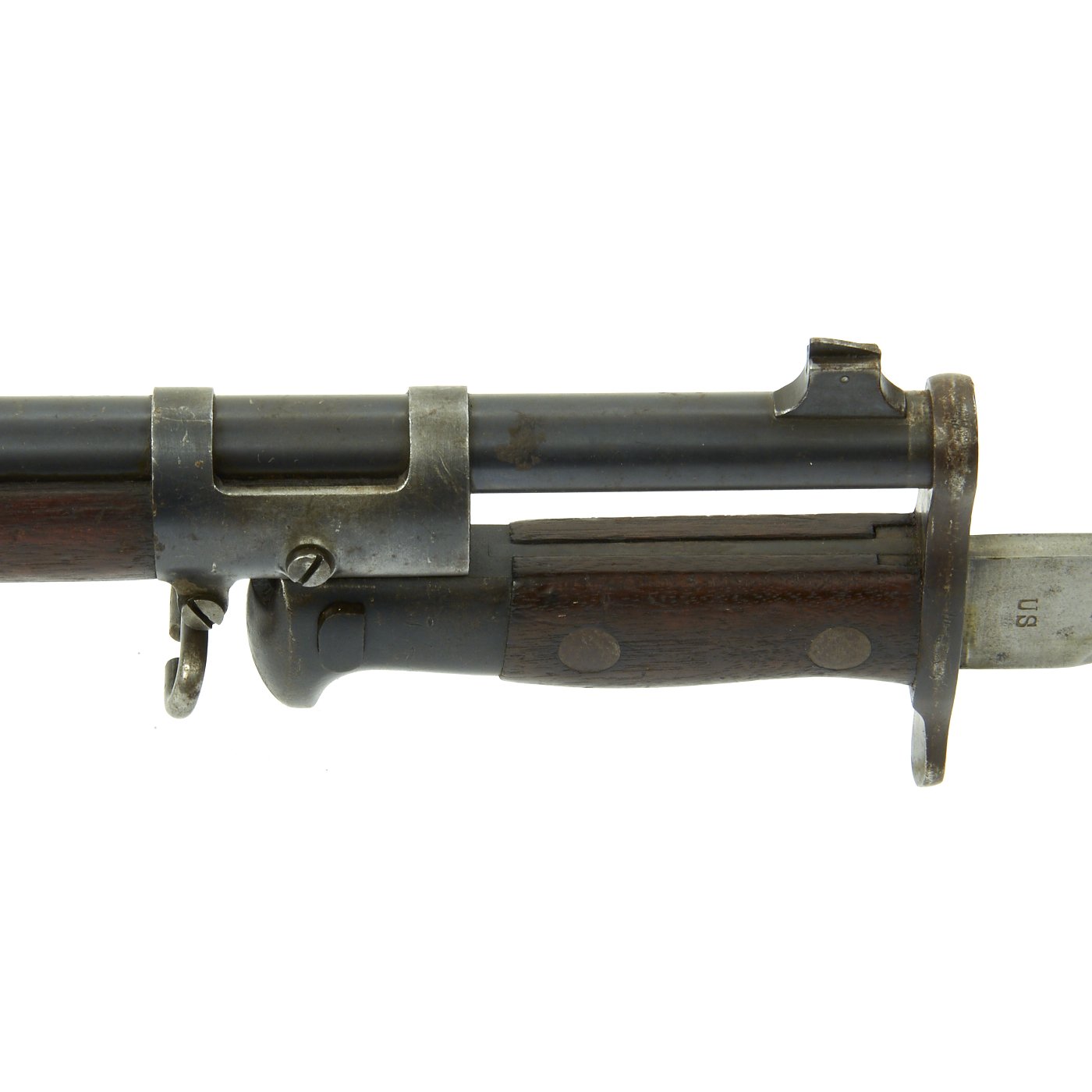
The cartridge would be paired with the American Mauser development designated as the "M1903". Again following the world's lead, the US adopted the pointed bullet design and developed it into a 150-grain cartridge as the "Cartridge, Ball, Caliber 30, Model of 1906" (known as the ".30-06"). First forms were developed around a 220-grain bullet sporting a blunt-nose shape but this was later abandoned when the Germans introduced their pointed-nose bullet (the "Spitzer") in 1905. Going along with contemporaries worldwide, the US went on to adopt the "Mauser" system under license from Germany, paying the then-hefty sum of $200,000 for localized production rights. Springfield eventually produced a variety of rifle and carbine forms based on the Krag-Jorgensen and these were known under model designators of M1892, M1896, M1898 and M1899 showcasing their respective years of introduction. This then led to the Ordnance Department to search for yet another new service rifle despite the heavy commitment in bringing the Krag-Jorgensen about. The Krag-Jorgensen design was the standard issue infantry rifle of American soldiers during the Spanish-American War (1898) to which the type was deemed outclassed by the more effective charger-loaded Model 1893 Spanish Mausers being used by the enemy.

Springfield Armory of Massachusetts was charged with production (which eventually earned the rifle the name of "Springfield Model 1892") and it delivered on some 500,000 examples between 18.

Much financing was placed into its large-scale production and government facilities were heavily retooled specifically for the large-scale endeavor. Despite protests from local arms manufacturers, the foreign-born Norwegian Krag-Jorgensen rifle was selected the winner, becoming the first "magazine rifle" of the US military. The story of the M1903 dates back to the late 1800s when, in 1892, the United States Army held trials between 53 competing designs for its new standard service rifle. After it fell out of wide scale use as a standard infantry rifle, the M1903 found a second life as a dedicated sniper rifle and in second-line support roles for guard and defense duty. The result was a capable long gun with accuracy at range and a wholly reliable internal mechanism that made it a success for much of its career.

The design had its origins in the tried-and-proven German Mauser action of which many other bolt-action rifle designs of the time had adopted (or outright copied). The M1903 "Springfield" bolt-action service rifle was the standard infantry rifle of the American Army throughout its participation in World War 1 and continued in service into World War 2 while seeing limited use in the Korean and Vietnam conflicts.


 0 kommentar(er)
0 kommentar(er)
